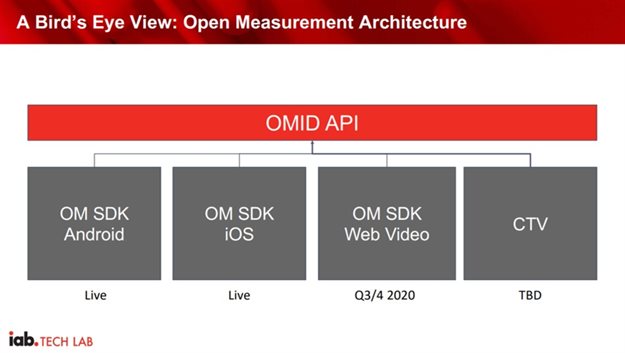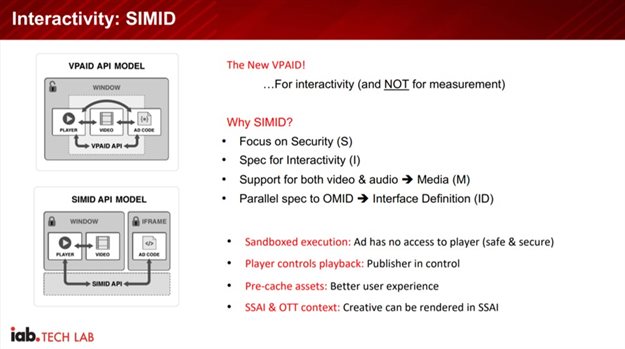The IAB SA and IAB Tech Lab recently held a virtual open forum on ad experiences and measurement, which included interactive discussions with international speakers, panel thought leadership with South African executives and deep dives into the technical details of the marketing industry to facilitate conversations between industry experts, attendees and IAB Tech Lab product experts on some of the most pressing issues in our industry.
IAB Tech Lab's Amit Shetty presented on tech standards that enable improvements in ad experiences and measurement.
Shetty started by sharing a slide showing the history of the "VSUITE" and said that since 2008, when it started, they had some minor updates here and there up until 2016, when they released Vast 4.0, which is where they made a major architectural shift in terms of how things are done.
He went on to explain the history around this and said that a lot of it was driven by a move towards OTT, CTV and the SSAI requirements. So basically from a rich client-side, which is where all the ad insertions were happening over to a world where a lot of the ad insertions were happening on the server-side. This came with a lot of challenges:
He said the biggest of these challenges is how does verification work in this world, where you don't have VPAID, etc on the client-side.
Moving over to mobile challenges, Shetty said that mobile has its own set of problems with the old world, with VAST and VPAID.
Challenges include:
- Verification usually needs native SDK - something that, especially with in-app verification, where you are able to make sure that the ad that you are trying to run is viewable, etc. VPAID cannot really do that because it is transcript-based.
- VPAID is generally disliked by publishers because it's a black box. Publishers are really worried about their user-experience with that.
- MRAID does not support all measurement requirements
- No scale in verification with proprietary SDKs
He said the best solution was to have every verification vendor provide their own SDKs. But the challenge there is that analysers would want to have their own verification vendor, their preferred verification vendor, which means that the publishers would have to include SDKs from all these different verification vendors.
He said what they are trying to do is help simplify that entire ad-tech of standards. They are trying to clear about three categories; delivery, measurement and interactivity.
For delivery, they are going with VAST 4, for measurement, they're going with OMID - open measurement and for interactivity, they're going with SIMID:
Shetty also talked a bit about the meta-data related topics, specifically focusing on the UniversalAdID feature in VAST 4.0. This is the ID to clearly identify video creative assets - across platforms. This is important for reporting but also for things like frequency capping for example, in the case of SSAI/caching, etc.
He said this has been a problem because everyone reviews their own IDs, there's no real consistent mechanism across platforms. So, UniversalAdID is a feature where they combine the "registry" plus the actual ID value, so now you can be confident that you know what you're talking about, he said.
A second important feature of VAST 4 is macros. So VAST is a response-format and with VAST 4, Shetty explained that they are trying to move forward also standardising an ad request format.
He said that they have now separated the macros onto a separate page, which allows us to grow out the macros without having to update the VAST 4 specs.
View the latest/current list of the "official" macros defined by the IAB Tech Lab's Digital Video Technical Working Group here.
The benefits include:
- Better user experience because you are able to pass the information about client context upfront. He said that with the VAST 4 Macros, you can now inform the server about the capabilities of the device. Fewer errors and better workflows.
- Better measurement. Macros is a better way to implement and acquire additional data in all your impression beacons and your tracking beacons.
He also wanted to make the SA market aware of the OTT/CTV IFA (identifier for advertising) spec, which is not yet a huge factor in our country. It defines three parameters for OTT devices; IFA, IFA Type and LAT (Limit Ad Tracking). You can read more on it here.
The role of taxonomies
Shetty touched on the role of taxonomies and said we have three different taxonomies; content, audience and ad product.
- Content taxonomy: Describes the 'aboutness' of a site/app/channel
- Audience taxonomy: Describes audiences (demographics, interests, purchase intent)
- Ad product taxonomy: Describes the product or service in an ad
Next, he moved on to verification/measurement: OMID and OM SDK.
He said on the mobile side, publishers will have to include SDKs from a range of verification vendors but now they have open measurement, where all these key vendors are contributing to it and they have a settled place, a settled shared SDK that everyone trusts and they also have a certification process to make sure that it's been implemented correctly.
He explained how it works and said you have a common API that everyone, including the verification vendors can use, and then you have the SDKs for each of these platforms that implement that API.
A key point is that the goal here is to have a single way of looking at measurement and have a single API that works across all these platforms.
He also said that the key here is adoption and that over 60 major SDKs and apps certified for OM SDK integration. Downstream deployment: 85% of Google SDK impressions OM SDK enabled.
Interactivity
He said you usually have the basic ads on the video side which can have a lot of impact but they also found that interactive ads get a lot more engagement and that's the reason why it has higher value. But VPAID had a lot of issues around security and around how it's a black box/user experience, etc, and that's why they're replacing VPAID now with Open Measurement for verification and now SIMID for interactivity with a focus on security.
He said it's all about creating a clear, clean security model that can be used. This also allows for the added ads to be cached. So now you have the actual media file separate from the executable code and all the other assets, you can actually pre-cache these assets which is very important from a mobile perspective, where you have to worry about data and bandwidth.
Interactivity: VAST Interactive Templates
He told us that SIMID is the ideal interactive capability where it supports powerful interactive experiences in a safe environment for publishers, but it does require allowing unknown scripts to be run.
Their solution is VAST Interactive Templates, templatised interactive ad experiences - predefined experiences built on the platform itself and those experiences are driven by metadata, using VAST.
He explained that an end card is the example that they include in VAST 4, where they have the code that implements what is done by the publisher and the ad itself within the VAST tag that contains the metadata and the links and images that you'd like to include, within the VAST tag. The publisher then takes the VAST tag and creates that interactive experience that you can present to the end-user.
That is how VAST templates work and he said that they hope that more people will start using it and build on it with extensions.
View the full webinar, including Shetty's panel discussion with Imraan Rajab, chief operating officer at Mediacom, Charmaine Kruger, measurement specialist at Google and Ricky Vieira, ad operations director at RookDigital Media below:
For more on the IAB Tech Lab and what it is they do, you can visit its website and to find out more about IAB SA events and how to join, click here.


























































